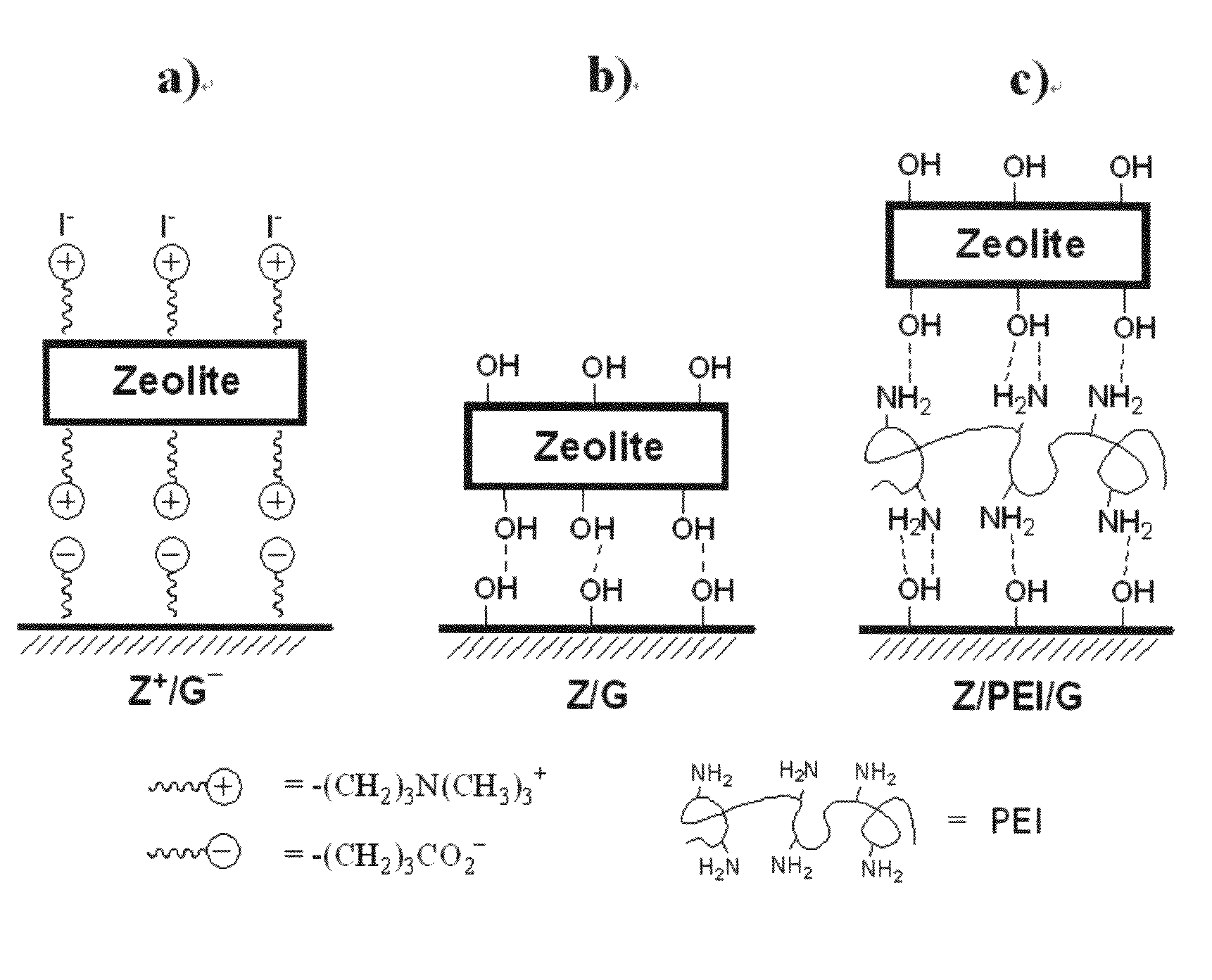Methods for preparing composites of substrate-molecular sieve
a technology of molecular sieve and composite material, which is applied in the direction of ceramic layered products, organic chemistry, silicon compounds, etc., can solve the problems of affecting the formation of linkages between substrates and zeolite particles, and affecting the arrangement of zeolites
- Summary
- Abstract
- Description
- Claims
- Application Information
AI Technical Summary
Benefits of technology
Problems solved by technology
Method used
Image
Examples
example 1
Preparation of Silicalite Monolayer Using Polyethyleneimine (PEI)
Preparation of Polyethyleneimine-Tethered Glass Plates
[0091]Glass plates (18×18 mm2, Marienfeld) were immersed in piranha solution (H2SO4:H2O2=7:3) for 30 min and washed with distilled water, followed by drying under nitrogen atmosphere. The dried glass plates were coated with polyethyleneimine (PEI, Aldrich, Mw=25000) diluted in ethanol by spin coating, resulting in the production of PEI-tethered glass plates, PEI-G. Finally, the PEI-G glass plates were dried under nitrogen atmosphere.
Preparation of Silicalite Monolayer by Rubbing
[0092]The PEI-G plates were placed on a clean filter or weighing paper and fixed with adhesive tapes. Bare zeolite crystals were attached onto the surface of the PEI-G plates by rubbing.
[0093]Silicalites with different crystal sizes were synthesized as follows: Silicalites with four different average sizes (0.3×0.1×0.6, 1.3×0.5×1.7, 2.5×1.2×4.1, and 4.6×1.5×11 μm3) were prepared using a synth...
example 2
Preparation of Zeolite a Monolayer Using Polyethyleneimine (PEI)
[0094]Zeolite A monolayer was formed on the glass surface according to procedures of Example 1, except that zeolite A as molecular sieve particles was used instead of silicalite.
example 3
Preparation of Soil Particle (Layer Structure Material) Monolayer Using Polyethyleneimine (PEI)
[0095]Soil-particle monolayer was formed on the glass surface according to procedures of Example 1, except that soil particles as molecular sieve particles were used instead of silicalite.
PUM
| Property | Measurement | Unit |
|---|---|---|
| Length | aaaaa | aaaaa |
| Size | aaaaa | aaaaa |
| Size | aaaaa | aaaaa |
Abstract
Description
Claims
Application Information
 Login to View More
Login to View More - R&D
- Intellectual Property
- Life Sciences
- Materials
- Tech Scout
- Unparalleled Data Quality
- Higher Quality Content
- 60% Fewer Hallucinations
Browse by: Latest US Patents, China's latest patents, Technical Efficacy Thesaurus, Application Domain, Technology Topic, Popular Technical Reports.
© 2025 PatSnap. All rights reserved.Legal|Privacy policy|Modern Slavery Act Transparency Statement|Sitemap|About US| Contact US: help@patsnap.com



